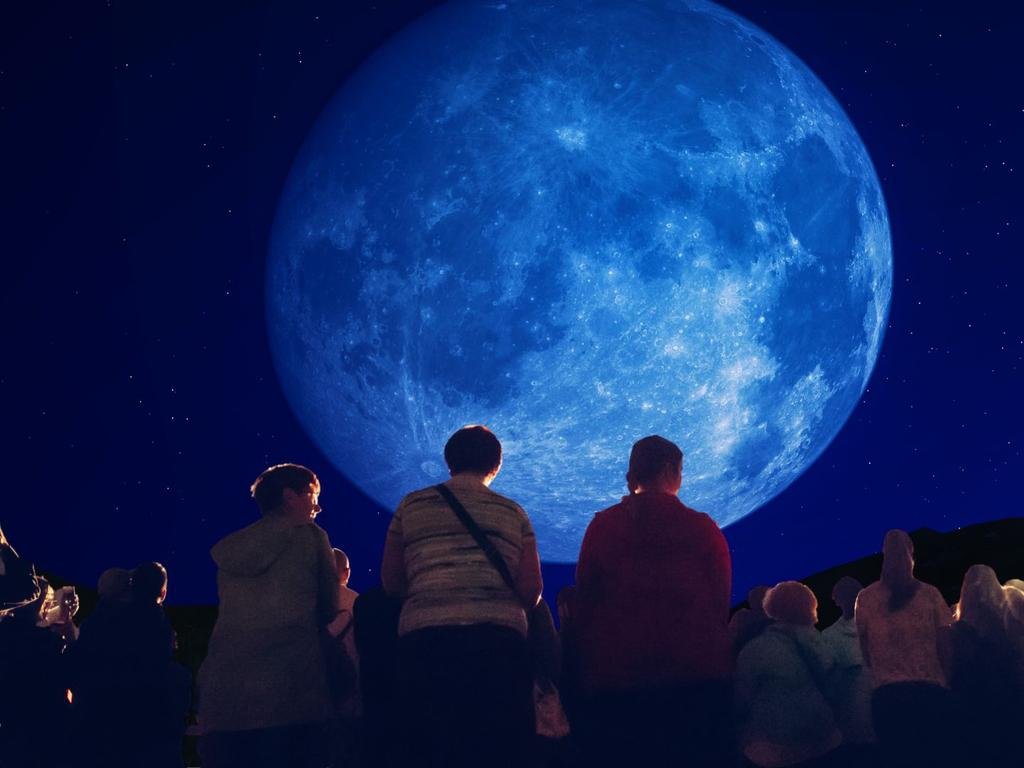Understanding the Supermoon: Nature’s Grand Display
A supermoon is a fascinating celestial event that enthralls both amateur stargazers and professional astronomers alike. Scientifically, a supermoon occurs when a full moon coincides with the moon’s closest approach to Earth in its elliptical orbit, a point known as the perigee. This proximity amplifies the moon’s appearance in the sky, making it not only conspicuously larger but also significantly brighter than an average full moon. The meaning of ‘perigee’ is crucial for understanding this phenomenon, as it represents the closest point in the moon’s orbit around Earth, a mere 356,500 kilometers away, compared to its average distance of about 384,400 kilometers.
This increase in the moon’s apparent size and brightness is what transforms a regular full moon into a supermoon. When the moon is at perigee and simultaneously full, it appears up to 14% larger and 30% brighter than at apogee, the farthest point in its orbit. While the term ‘supermoon’ is a relatively new addition to the lexicon of skywatchers, the phenomenon itself is an intrinsic part of the lunar cycle, happening around four to six times a year. However, it’s essential to note that not all full moons are supermoons; approximately one-quarter of all full moons meet the criteria.
The visual impact of a supermoon is profound. Skywatchers around the globe often find themselves spellbound by the striking spectacle of an enlarged and luminous moon gracing the heavens. Observing a supermoon offers a unique opportunity to connect with the celestial mechanics governing our night sky, providing a vivid reminder of our place in the cosmos. The optical illusion that makes the moon appear even larger when it’s near the horizon further enhances this mesmerizing experience, making supermoons a highly anticipated event for enthusiasts. Through this understanding of the supermoon, one appreciates not just the beauty of this rare sight but also the intricate dynamics of lunar orbits.
Decoding the Blue Moon: Rarity in the Skies
A blue moon is a term that has fascinated and perplexed sky watchers for generations. Contrary to popular belief, the moon does not actually turn blue. The term “blue moon” refers to the occurrence of two full moons within a single calendar month. This phenomenon is a striking example of celestial rarity, given that only about 3% of all full moons meet this classification.
The origin of the term “blue moon” can be traced back to folklore and evolving linguistic usage. Initially, it referred to something that was rare or absurd, eventually transitioning into a more astronomical context. The modern interpretation took shape in the 20th century when Sky & Telescope magazine misinterpreted the Maine Farmer’s Almanac. This interpretation has since been widely accepted, becoming a fixture in astronomical jargon and popular culture.
The cultural significance of the blue moon extends beyond its rarity. In various cultures, the second full moon was believed to impart special attributes. For instance, in medieval Europe, it was thought to bestow magical properties or to be an omen for unusual events. In contemporary times, it often symbolizes the infrequent nature of certain occurrences, leading to the idiom “once in a blue moon” which signifies a rare event.
The occurrence of a blue moon also has implications for the study of lunar calendars. With the moon’s cycle lasting approximately 29.5 days, months with 30 or 31 days are more likely to experience two full moons. This alignment demonstrates the intriguing complexities within our lunar and solar calendars, reminding us of the intricate dance between celestial bodies.
Decoding the blue moon invites us to appreciate its rarity and delve into the rich tapestry of stories and beliefs that surround it. Whether viewed through the lens of astronomy or folklore, the blue moon remains a captivating heavenly spectacle, offering both scientific intrigue and poetic inspiration.
The Convergence: What Makes a Super Blue Moon?
A Super Blue Moon is an extraordinary event that delights both astronomers and sky-watchers alike. It represents the rare convergence of two lunar phenomena: a supermoon and a blue moon. A supermoon occurs when the moon’s orbit brings it closest to Earth, making it appear larger and brighter than usual. Specifically, this proximity is termed perigee. Concurrently, a blue moon is defined as the second full moon in a single calendar month. When these celestial conditions align, we witness the awe-inspiring Super Blue Moon.
The rarity of a Super Blue Moon lies in the statistical improbability of these two events coinciding. The moon takes approximately 27.3 days to complete an orbit around the Earth, while a lunar cycle spans about 29.5 days. Therefore, a supermoon happens roughly once every 14th full moon, or about once a year. Meanwhile, blue moons are less predictable, occurring about seven times every 19 years due to the variability of the Gregorian calendar. The overlap yields a Super Blue Moon only once every few decades, underpinning its cosmic significance.
Historically, Super Blue Moons have been documented long before advanced astronomical tools were available. Records indicate occurrences every so often, captivating both ancient and modern-day sky-gazers. The most recent Super Blue Moon graced the skies in August 2023, an event that attracted immense global attention. This instance was particularly noteworthy due to its vivid luminance and the clarity with which it was visible in various parts of the world.
The visual characteristics of a Super Blue Moon are truly remarkable. The supermoon aspect ensures a moon that appears up to 14% larger and 30% brighter than a typical full moon, making for a spectacular sight. Astronomically, the heightened apparent magnitude also offers exceptional opportunities for research and observation. Both amateur astronomers and professional observatories utilize this rare event to gather enhanced lunar data, adding to our collective understanding of our nearest celestial neighbor.
Capturing the Marvel: Tips for Viewing and Photographing a Super Blue Moon
Capturing the enchanting spectacle of a super blue moon requires careful planning and the right conditions. Observers and photographers should be aware of the optimal times and locations for viewing this celestial event. The best time to view a super blue moon is during its rise or set, when the moon is near the horizon. This positioning allows for ambient conditions that produce stunning visual effects, such as a larger-than-life appearance and a beauitful hue, making it the perfect moment for photography.
Choosing the right location is crucial. Elevated areas like hills or open fields away from city lights can enhance the viewing experience, reducing light pollution and providing a clearer sky. National parks or rural locations are often ideal for ensuring an unobstructed view. Utilize moon phase and rise/set calculators to pinpoint the exact time and direction of the moon’s appearance.
When preparing to photograph the super blue moon, having the correct equipment is essential. A DSLR or mirrorless camera with manual settings will offer greater flexibility. A telephoto lens can capture detailed surface features of the moon, while a wide-angle lens may be better for including terrestrial elements to provide depth and context. Additionally, a sturdy tripod is indispensable for maintaining long exposure stability.
Camera settings should be adjusted to optimize the quality of the images. Start with a low ISO setting (100-200) to minimize graininess, and use a small aperture (f/8 – f/11) to ensure sharpness throughout the image. Shutter speed will vary depending on the lighting conditions, but a slower shutter speed (1/60 – 1/250) is generally recommended. Remote shutter releases or timers can reduce camera shake, consequently enhancing image clarity.
For post-event sharing and exhibition, consider platforms such as social media, online photography communities, and personal blogs. Participating in photo contests or collaborating with galleries can also provide broader exposure for your work. Integrating descriptive captions or brief narratives about the super blue moon’s significance can further engage your audience and add depth to your visual storytelling.


